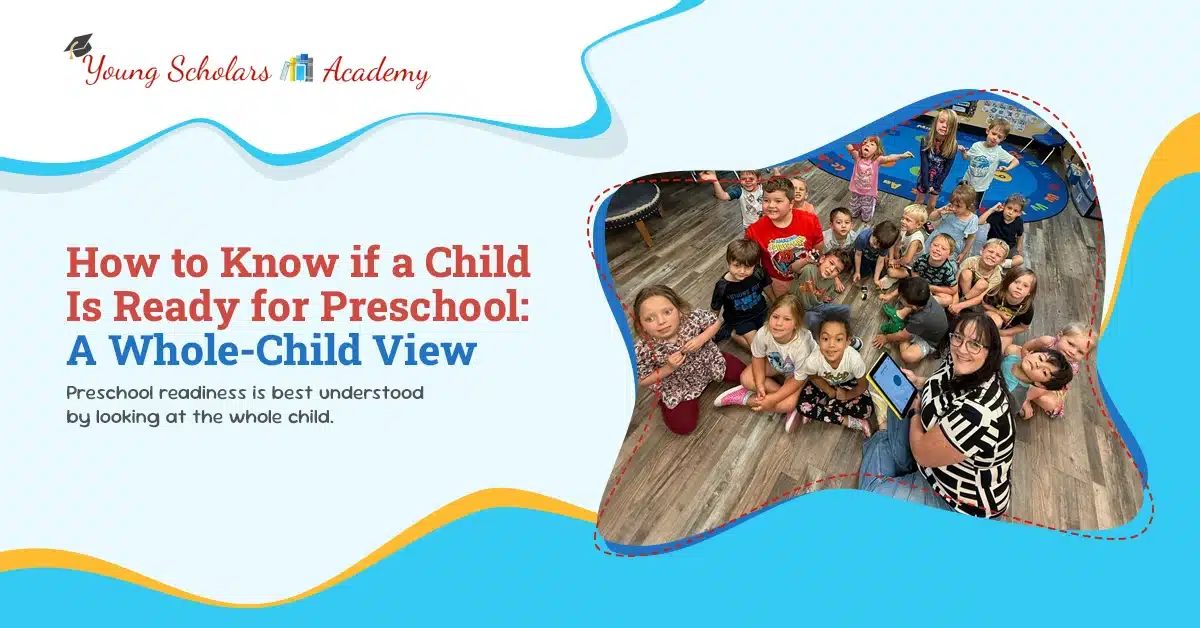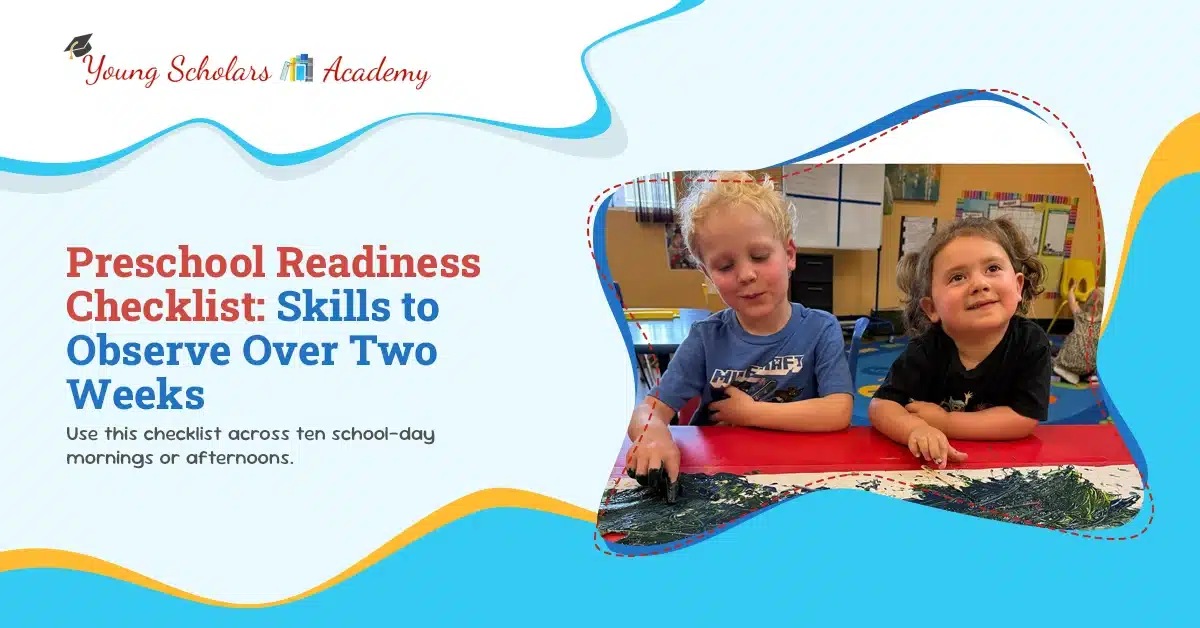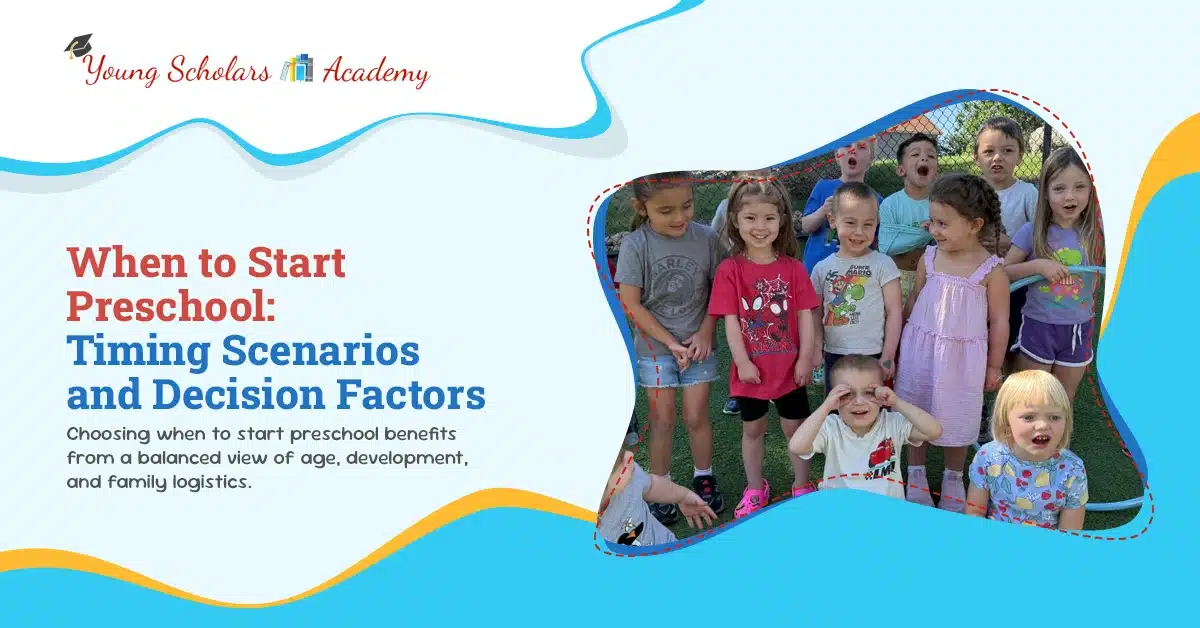The clearest signs your child is ready for preschool can be observed across social, emotional, and practical milestones. Recognizing these indicators helps families select an appropriate start date and support a smooth transition into structured learning.
Look for growing independence with toileting and self-care, brief separations from caregivers, interest in peers and cooperative play, and the ability to follow simple directions and routines. Emerging language to express needs, curiosity for books and hands-on activities, and stamina for short group sessions indicate readiness. This guide highlights the most common markers.
How to Know if a Child Is Ready for Preschool: A Whole-Child View

Preschool readiness is best understood by looking at the whole child. Growth across social, emotional, communication, physical, and self-help domains creates the foundation for a positive start. Families can observe everyday routines, play interactions, and short group experiences to determine fit and timing.
Social and emotional readiness
Children ready for preschool show interest in peers and can participate in brief shared play. They begin to manage feelings with simple support and accept help from trusted adults. Helpful indicators include:
- Willingness to join group activities for a short period
- Emerging turn-taking and sharing with guidance
- Ability to recover from minor frustrations
Communication and listening
Effective communication supports safety and learning. Readiness grows when children can express needs and understand simple directions. Look for:
- Using words or gestures to request help or ask for a break
- Following one- to two-step directions during routines
- Listening to short stories and songs with engagement
Independence with routines
Classroom flow relies on predictable self-help skills. Complete mastery is not required, but consistent progress matters. Key skills include:
- Progress with toileting and handwashing
- Managing a backpack, snack container, and outerwear with minimal help
- Staying with the group and responding to visual or verbal cues
Curiosity and attention
Children ready for preschool show interest in books, materials, and imaginative play. Short spans of focused attention help them participate in centers and circle time. Signs include:
- Choosing activities and exploring materials with purpose
- Completing a simple task before moving on
- Engaging in pretend play or early problem-solving
Physical stamina and health
Readiness also involves energy for active play and fine-motor tasks. Indicators include:
- Comfortable participation in playground movement
- Beginning control with crayons, playdough, and child-safe scissors
- Steady sleep and snack routines that support the school day
Bringing it together
If most of these indicators are present across typical days, your child is likely ready to begin preschool. Continued practice at home and collaboration with teachers will support a confident transition.
Preschool Readiness Checklist: Skills to Observe Over Two Weeks
Use this checklist across ten school-day mornings or afternoons. Mark Often (4–5 days/week), Sometimes (1–3 days/week), or Not yet. Look for patterns across domains rather than perfection in every item.
Social–Emotional
- Joins group play or an activity for 5–10 minutes with minimal support.
- Takes turns and shares with prompts from an adult.
- Recovers from small frustrations within a short period.
- Accepts help and redirection from a trusted non-parent adult.
Communication and Listening
- Expresses needs, wants, or a break using words or simple phrases.
- Follows one- to two-step directions during routines.
- Listens to a brief story or song for 5–7 minutes with engagement.
- Understands common classroom cues such as “wait,” “clean up,” and “line up.”
Independence and Self-Help
- Progress with toileting; attempts handwashing without reminders.
- Manages jacket, shoes, and backpack with limited assistance.
- Opens snack or lunch containers and tidies up after eating.
- Stays with the group and responds to visual or verbal signals.
Cognitive Approaches to Learning
- Engages in pretend play or builds with a plan in mind.
- Completes a simple task before moving to a new one.
- Sorts, matches, or counts objects up to 5–10.
- Tries a solution before asking for help; accepts modeling.
Physical Readiness
- Moves safely on stairs and playground equipment.
- Uses crayons, playdough, and child-safe scissors with beginning control.
- Sits comfortably for a short circle time and participates in movement breaks.
- Maintains steady energy through a half-day routine with a snack and hydration.
Routines and Transitions
- Separates at drop-off with a predictable goodbye routine.
- A song, timer, or visual cue transitions between centers.
- Lines up, waits briefly, and stays near the teacher during walk times.
- Puts materials away and returns to a meeting spot when asked.
How to Interpret the Checklist
A readiness pattern emerges when “Often” appears across most domains, especially social–emotional, communication, and routines. “Sometimes” in one or two areas is typical and can improve with practice. If many items remain “Not yet,” consider a gradual entry plan, targeted home practice, or consultation with teachers to support growth before full enrollment.
When to Start Preschool: Timing Scenarios and Decision Factors
Choosing when to start preschool benefits from a balanced view of age, development, and family logistics. The goal is a start date that aligns with the child’s readiness and the program’s structure.
Typical Ages and Program Models
Many children begin between three and four years old. Common options include two or three weekly mornings, progressive schedules that add days over time, and full-day programs. Families can match frequency to current stamina and attention span.
Birthdays and Enrollment Cutoffs
Children with summer or early autumn birthdays may sit near an age cutoff. Helpful approaches include:
- Start with a shorter weekly schedule and reassess after six to eight weeks.
- Choose a class with mixed ages to allow peer modeling and flexibility.
- Plan for a second preschool year if maturity benefits from additional time.
Daily Rhythms: Naps, Stamina, and Meals
Energy patterns guide placement and timing. Indicators of fit include:
- Consistent sleep routines and the ability to participate without an afternoon nap in half-day settings.
- Capacity to engage in active play and seated activities across a balanced morning.
- Comfort with snack and lunch routines, including opening containers and cleaning up.
Separation History and Prior Care
Experience with caregivers outside the home supports an easier transition. Consider:
- Short practice separations with a predictable goodbye routine.
- Familiarization visits to the classroom before the first day.
- Coordination with teachers on comfort objects and arrival rituals.
Health, Development, and Supports
Medical needs, sensory preferences, and speech or occupational therapy schedules may influence start dates. Best practice includes communicating accommodations, confirming care plans, and aligning therapy sessions with school hours to avoid fatigue.
Family Logistics and Program Fit
Transportation, sibling schedules, and work commitments should align with drop-off and pick-up windows. Review teacher-to-child ratios, class size, and curriculum philosophy to ensure an environment that matches the child’s learning style.
Midyear Starts and Gradual Entry
Beginning midyear can be appropriate when readiness emerges after the fall. A gradual entry plan—shorter days that lengthen over two weeks—often leads to steady adjustment.
Decision Snapshot
If readiness indicators are present across social–emotional, communication, and routine skills, select the earliest start that fits the family calendar and the program model, then monitor progress during the first month.
Social and Emotional Development in Group Settings
Healthy social and emotional growth supports learning, safety, and positive peer relationships. In group settings, children practice cooperation, self-regulation, and problem-solving with guidance from teachers. Observing everyday interactions provides a clear picture of strengths and areas for support.
From Parallel to Cooperative Play
Children progress from playing alongside others to engaging in shared themes and turn-taking. Indicators of readiness include:
- Joins a small group activity for 5–10 minutes.
- Accepts basic roles in pretend or construction play.
- Waits briefly for a turn with adult prompts.
Emotion Regulation and Coping
Managing feelings in a classroom involves recognizing emotions and using simple strategies. Look for:
- Recovers from minor conflicts with breathing, pauses, or teacher prompts.
- Uses words or gestures to label feelings and request space.
- Tolerates brief delays without leaving the activity.
Prosocial Skills and Friendship Building
Early empathy and cooperation strengthen the classroom community. Signs of growth include:
- Shares materials with reminders and acknowledges others’ ideas.
- Offers help or comfort when a peer is upset.
- Respects personal space and adjusts behavior when cued.
Self-Advocacy and Help-Seeking
Children benefit from knowing how to access support and set simple boundaries. Indicators include:
- Tells a teacher when assistance is needed rather than taking from peers.
- Uses short phrases such as “My turn next” or “I need a break.”
- Accepts alternatives when the first choice is not available.
Classroom Citizenship and Safety
Following group expectations keeps activities smooth and engaging. Helpful behaviors include:
- Responds to visual schedules, songs, or signals for transitions.
- Follows one- to two-step rules during centers and outdoor play.
- Participates in clean-up and returns to the meeting area when asked.
Family Practices that Strengthen Skills
Consistency between home and school encourages steady progress. Effective supports include:
- Short playdates or family games that practice turn-taking.
- Emotion coaching with simple feeling words and calm-down tools.
- Clear routines for greetings, goodbyes, and clean-up.
What This Means for Readiness
Children are prepared to learn and connect in a preschool classroom when these behaviors occur regularly with light guidance. Focused practice in one or two areas typically leads to rapid gains during the first weeks of school.
Conclusion
A confident preschool start comes from viewing readiness as a pattern that spans social–emotional skills, communication, independence, curiosity, and health. The checklist offers a clear way to observe progress over two weeks, while the timing guidance helps align age, stamina, and family logistics with an appropriate program model. Growth continues when home routines mirror classroom expectations through short play, read-alouds, and predictable transitions. In supportive group settings, children learn to regulate emotions, cooperate with peers, and ask for help, building the foundation for safe, joyful learning. With steady practice and responsive teaching, most children advance quickly during the first weeks of school.
Start a confident preschool journey today—call (719) 522-9099 or connect at https://youngscholarsacademycolorado.com/contact-us/.


Leave a Reply